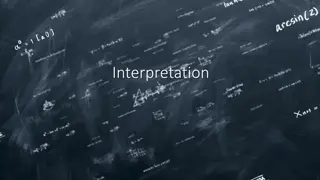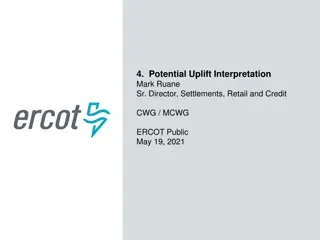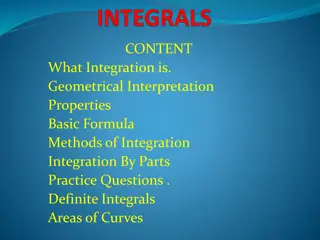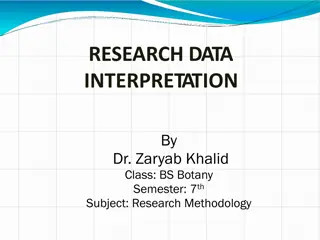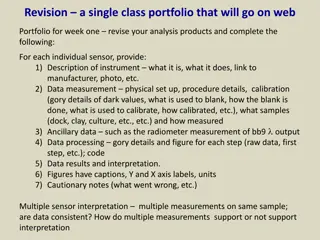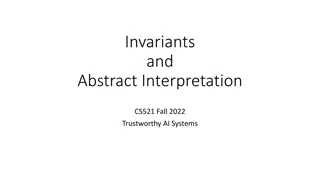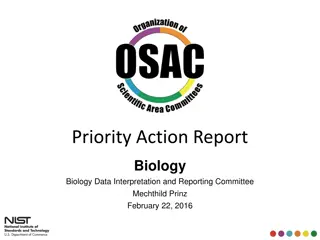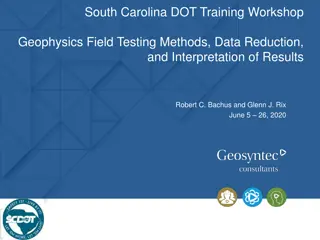
Immunoelectrophoresis: Techniques and Interpretation
Immunoelectrophoresis is a technique that utilizes the principles of electrophoresis and diffusion to separate and analyze antigens and antibodies. This method allows for the visualization of antigen-antibody interactions through the formation of precipitin bands. By interpreting the results obtained from this process, valuable information about the concentrations of proteins and unknown samples can be determined. Rocket Immunoelectrophoresis, in particular, offers various advantages in terms of simplicity, speed, and reproducibility, making it a useful tool in protein analysis.
Download Presentation

Please find below an Image/Link to download the presentation.
The content on the website is provided AS IS for your information and personal use only. It may not be sold, licensed, or shared on other websites without obtaining consent from the author. If you encounter any issues during the download, it is possible that the publisher has removed the file from their server.
You are allowed to download the files provided on this website for personal or commercial use, subject to the condition that they are used lawfully. All files are the property of their respective owners.
The content on the website is provided AS IS for your information and personal use only. It may not be sold, licensed, or shared on other websites without obtaining consent from the author.
E N D
Presentation Transcript
Antigen-Antibody reactions (3) 1
Immunoelectrophoresis (IEP) Immunoelectrophoresis refers to precipitation in agar under an electric field. In electro-immunodiffusion, diffusion is combined with electrophoresis Electrophoresis separates antigen molecules according to differences in their electrical charges and molecular weight then specific antibodies diffuse and react with separated antigen forming precipitin bands. 20
Immunoelectrophoresis Immunoelectrophoresis (FL-Immuno/59) (youtube.com) 3
In gel: Precipitation (immunodiffusion) (IEP) (d) 4
Interpreting results (+) Watch for any signs of elliptical precipitin arcs as they indicate antigen- antibody interaction. (-)There is no reaction if no precipitation is formed. 5
In gel: Precipitation (immunodiffusion) (3 techniques) (e) 1. Advantage: This technique is much faster (15-20 mins) than the normal immunodiffusion techniques, where the diffusion is solely based on the concentration. 6
In gel: Precipitation (immunodiffusion) (f) 2. The height of the rocket is directly proportional to the antigen concentration. 7
Results The rocket height is plotted on one axis and the concentration on the other The heights of rockets formed by the antigen samples with known concentration are plotted in the graph to obtain the calibration curve. The concentration of the unknown antigen sample can be determined with help of the calibration curve 8
Advantages of Rocket Immunoelectrophoresis 1. Simple, quick, and reproducible method. 2. Several unknown samples can be analyzed on a single plate. 3. Small Concentrations of proteins can be measured. 9
In gel: Precipitation (immunodiffusion) 3- Laurell s-Two Dimensional Immunoelectrophoresis This assay involves two different electrophoresis steps: a normal electrophoresis and rocket electrophoresis The first electrophoresis step separates the antigen mix into its individual components In the second step the antigens react with antibody and are specifically detected by the immunoprecipitation.
1. the antigens in the mixture is separated using the electrophoresis. 2. A section of gel is selected, sliced and placed on a glass plate. 3. A layer of agar with antiserum is poured onto the glass plate adjoining the slice of gel at one end. 4. The gel slice end is placed towards the cathode and the rocket electrophoresis is performed at the perpendicular direction as the first run. 5. As the electrophoresis advances, the antigens from the gel slice enters into the antisera containing agar and the precipitin arcs are formed at zone of equivalence.
In gel: Precipitation (immunodiffusion) (g) 3. (2) (1) 12

